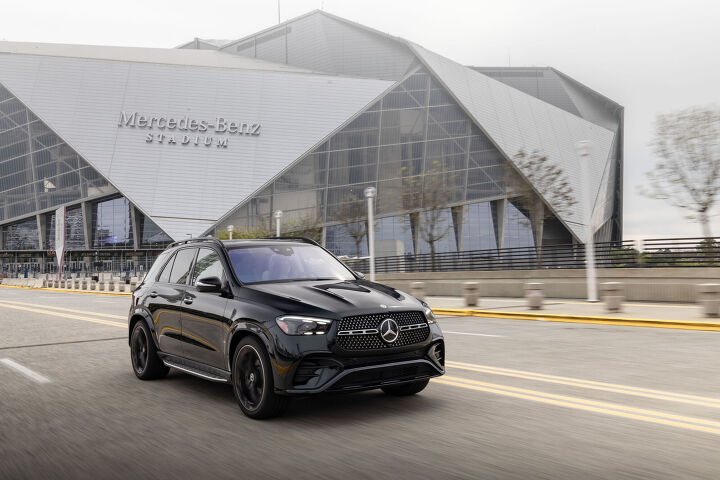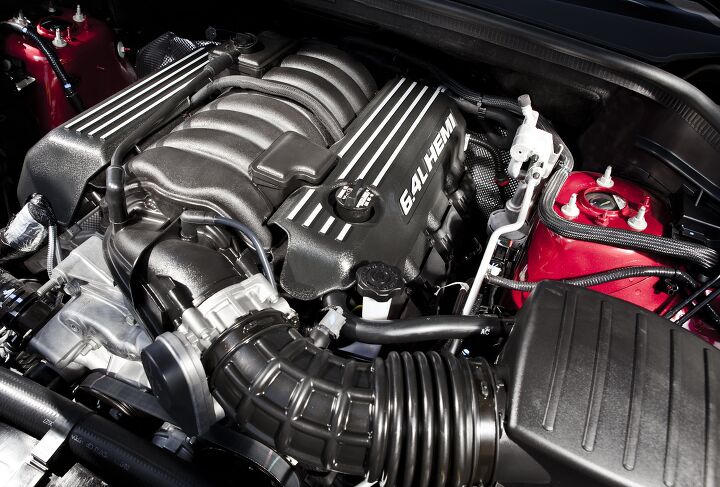While we’ve covered the fact that the average American household can no longer afford a brand new vehicle, it would appear today’s pricing is likewise encouraging affluent consumers to shop secondhand. Apparently, new vehicles are just for the wealthy now.
Bloomberg ran an article on Monday explaining how a former Mercedes-Benz lessee, named Marc Levine, decided to stop rotating between new cars after pricing his 2018 GLE 350 against a brand new one. This concern was that leasing what was effectively just the new version of the same model meant his monthly payment would be jumping from $640 to $1,200 per month.
The gentleman ultimately purchased a three-year-old Mercedes E-Class with a monthly payment of $748, voicing his frustration to the outlet that modern vehicles just don’t feel like a square deal. However, one disgruntled cardiologist who assumed he was rich enough never to have to buy used isn’t enough to prove the claim that vehicle pricing has run amok and been made totally untenable. Loads of people already know that the vehicle market is an absolute mess right now and there are plenty of data sets for them to reference.
From Bloomberg:
Car buyers across America—even those with comfortable incomes like Levine—are dropping out of the new-car market. The pandemic supply shortages that drove sticker prices skyward are in the rearview mirror, but the cost of a new set of wheels continues to climb. The average price of a new car this year is $48,205, up 21 [percent] from five years ago, according to researcher Cox Automotive Inc. And growing frustration over auto affordability is yet another “kitchen table” economy concern that’s bound to be running through the minds of American voters as they head to the polls tomorrow.
Sticker shock is increasingly scaring off many would-be buyers. A recent survey by automotive researcher Edmunds.com found that almost half of American car shoppers expect to pay $35,000 or less for a new car. That makes sense because the average trade-in is six years old, which means those buyers last purchased a new car back when the average price was in the mid-30s. When they return to the showroom and discover they’ll have to pay almost $50,000, they’re walking away. The Edmunds survey found that 73 [percent] of consumers are holding off on buying a new car because of the cost.
“The prices are just shocking people,” says Jessica Caldwell, head of insights for Edmunds. “They’re like, ‘How come buying the same car costs $300 more a month?’”
Based on the people I’ve spoken to regarding new-vehicle purchases, the public consensus is far more angry than simply wondering why cars are so much more expensive. Some are convinced that it’s an elaborate plot on the part of the industry to collaboratively bully shoppers into spending more by eliminating economy focused vehicles — something we’ve discussed on the TTAC Podcast. While there is no evidence of closed-door meetings between industry leaders to that effect, most automakers have indeed culled cheaper models from their lineup to court whatever they believed will offer the highest profit margins.
Surging inflation and decades of insufficient pay raises have certainly played a role in terms of out-of-whack pricing, as have government regulations mandating new equipment. But there’s definitely a sense that the industry is either incapable of producing affordable vehicles or has become largely unwilling to over the last several years. We only need to look at what executives have been saying about improving margins, leveraging connectivity features for profit and embracing subscriptions. Automakers are hurriedly trying to find new ways of charging their customers for features and equipment at the same time when most shoppers are signaling they’re financially tapped out.
While there was a period where analysts attempted to downplay the harshness of the situation, the problem is getting too big to ignore. Cars are becoming more complicated, more expensive to buy, and ultimately prohibitively expensive to own.
Bloomberg consultant AlixPartners LLP reported that American households with an average annual income above $265,000 accounted for 55 percent of expenditures on new vehicles last year. That’s up from 40 percent in 2020.
Meanwhile, households with an income between $16,000 and $41,000 represented just 6 percent of new vehicle purchases for 2023. Those making less than that, are effectively barred from buying new and would even have trouble finding something decent on the secondhand market. This means the bottom 25 percent of the market accounts for 6 percent of new vehicle purchases while the top 8 percent is responsible for 55 percent.
“The new-car market has moved to a more affluent buyer,” said Mark Wakefield, co-head at AlixPartners. “People are having to buy used vehicles, having to keep vehicles on the road longer.”
This is underselling the severity of the situation. We’re at a point where someone working two entry level jobs isn’t likely to be able to afford any vehicle, let alone a new one. Maintaining an older car is also not something one can do forever and ensures having to spend more time at the mechanic, which has also gotten dramatically more expensive in recent years. Even those who wrench at home are now feeling the pinch as there are now less places to source affordable parts from and fewer vehicles that can be fixed without needing specialty tools.
[Image: Mercedes-Benz]
Become a TTAC insider. Get the latest news, features, TTAC takes, and everything else that gets to the truth about cars first by subscribing to our newsletter.
Source: The Truth About Cars



